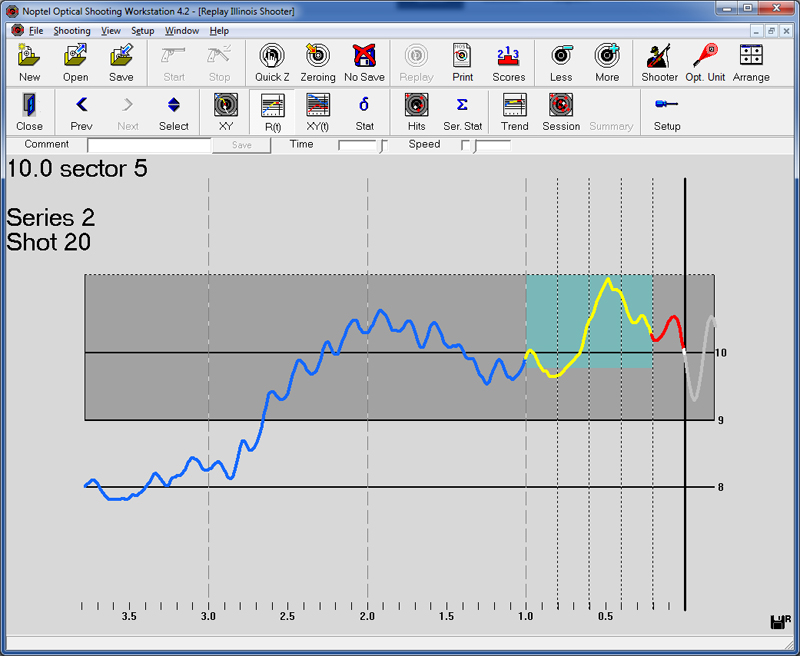Electronic Trainers
A lot of the succes that I have experienced in highpower is due to the use of an electronic trainer. This trainer has allowed me to break down and analyze specific parts of my shooting process and check my improvements to that process.
While they have helped me a great deal, they are not for everyone. First, their initial purchase price can be quite high compared to practicing on the range or just dry-firing. Second, their technical complexity is intimidating to alot of shooters. Third, patience and repetitive sessions are required to fully utilize these devices. Add in the fact that these units come from non-English speaking countries means that many casual shooters don't want to go to the trouble of acquiring and using one.
Despite the hurdles, I have been using a trainer called a NOPTEL since about 2002. It has helped me see things that I normally would not have just by looking through the sights. Additionally, I have been able to record my performance over the years and see trends in different aspects of my shooting.
Articles on using a NOPTEL
-
Plugging in your Offhand (Part 1) Using an electronic trainer to capture data behind the standing position.
-
Plugging in your Offhand (Part 2) Extracting information from the trainer software to analyze my standing.
-
Through the Eyes of Champions Looking at the offhand shots of champion shooters.
NOPTEL Components
The NOPTEL has three main hardware components.
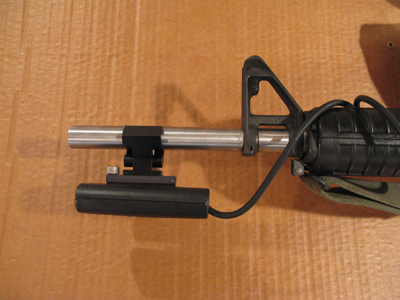 |
The Optical Unit This uses a clamp to mount to the barrel of the rifle. When activated by the software, the Optical Unit sends a beam of light to the target and receives the reflection. |
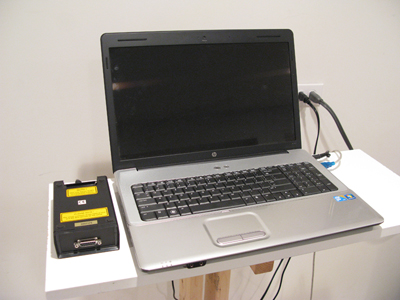 |
The I/O box. This device (shown on the left of the photo) connects to a PC and transfers data between the optical unit and the NOPTEL software. |
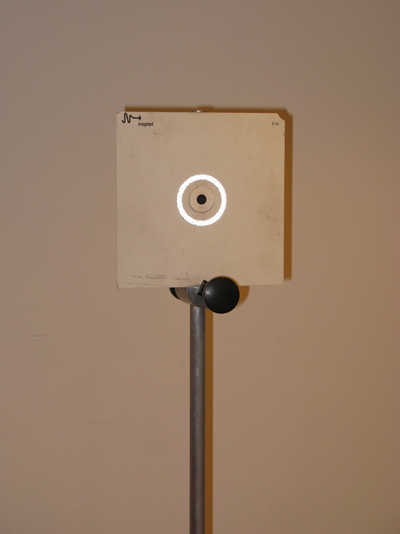 |
Reflective Target The target is a piece of plastic that I have mounted on an old microphone stand. Around the sighting black you can see a ring that reflected the light from the photo flash. This reflector bounces the light from the Optical Unit back to allow the software to determine the rifle's position relative to the target. |
Results on Screen
For each shot, the NOPTEL software will display a replay. The scoring rings are shown along with 4 seconds of trace before the shot and a brief period after the shot. This represents where the rifle was pointed on a target.
The color of the trace varies depending on how long before (or after) the shot breaks.
| Trace Color | Time relative to shot |
| Blue | 4 sec. to 1 sec. before shot |
| Yellow | 1 sec. to 0.2 sec. before shot |
| Red | 0.2 sec. before shot |
| White Dot | Location of shot break |
| Gray | 0.2 sec. after shot |
At the end of each replay a blue box is overlayed with the target. The size of this box is relative to the size of the wobble during the yellow trace. The larger the box in the horizontal direction, the larger the horizontal wobble. Same for vertical.
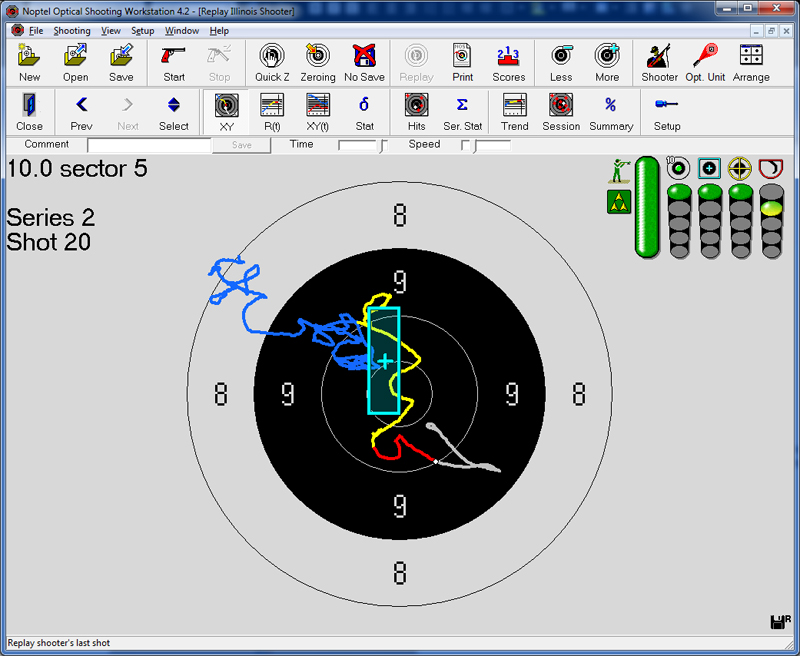
Another way of replaying the shot is based on how far away the trace was from the center of the target. This is the R(t) trace and is shown below.
The dashed line on top of the gray area represents the very center of the target. I.E. a perfect "X". The trace shows how close the sights are to that center as time gets closer to the shot. As in the above view, the trace changes from blue to yellow at 1 second before the shot. It then changes from yellow to red 0.2 seconds before the shot.
As the sights get closer to the center of the target, the trace on the R(t) chart moves upward toward the dashed line. Ideally, this trace will be at the height of the dashed line as it crosses the bold line on the right. This would be a perfectly centered "X". In the trace below this position is acheived about 0.5 seconds before the shot actually took place. Unfortunately, the sights then moved outward and the shot broke just inside the 10-ring.
